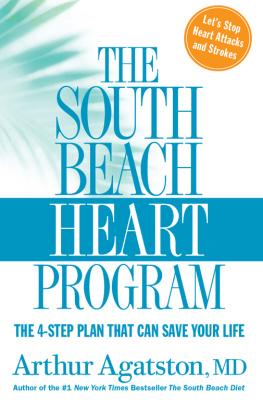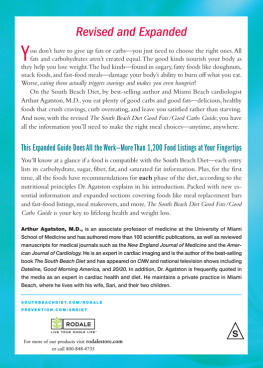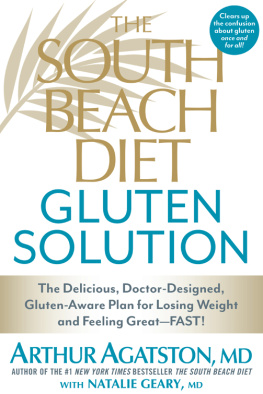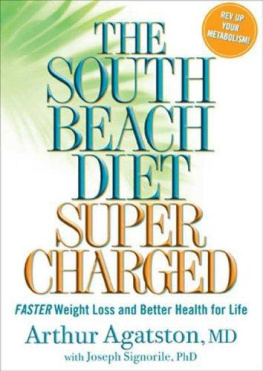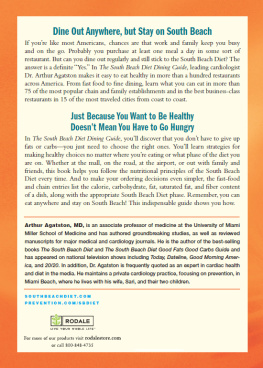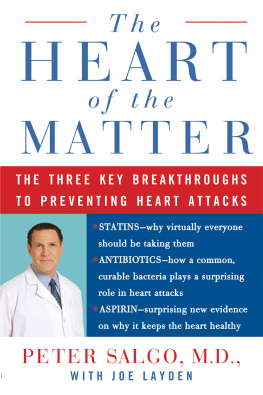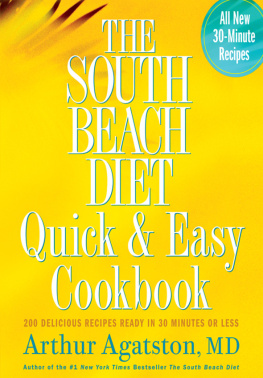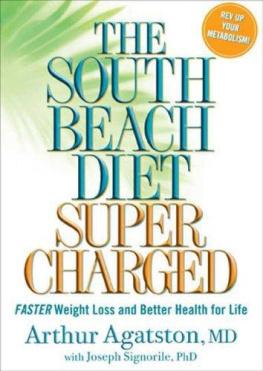
Notice
This book is intended as a reference volume only, not as a medical manual. The information given here is designed to help you make informed decisions about your health. It is not intended as a substitute for any treatment that may have been prescribed by your doctor. If you suspect that you have a medical problem, we urge you to seek competent medical help.
The information in this book is meant to supplement, not replace, proper exercise training. All forms of exercise pose some inherent risks. The editors and publisher advise readers to take full responsibility for their safety and know their limits. Before practicing the exercises in this book, be sure that your equipment is well-maintained, and do not take risks beyond your level of experience, aptitude, training, and fitness. The exercise and dietary programs in this book are not intended as a substitute for any exercise routine or dietary regimen that may have been prescribed by your doctor. As with all exercise and dietary programs, you should get your doctors approval before beginning.
Mention of specific companies, organizations, or authorities in this book does not imply endorsement by the author or publisher, nor does mention of specific companies, organizations, or authorities imply that they endorse this book, its author, or the publisher.
Internet addresses and telephone numbers given in this book were accurate at the time it went to press.
2007 by Arthur Agatston, MD
Photographs 2007 by Rodale Inc.
The South Beach Diet is a Registered Trademark of the SBD Trademark Limited Partnership.
All rights reserved. No part of this publication may be reproduced or transmitted in any form or by any means, electronic or mechanical, including photocopying, recording, or any other information storage and retrieval system, without the written permission of the publisher.
Illustrations by Lisa Clark
Photographs by Mitch Mandel/Rodale Images
Book design by Carol Angstadt
Library of Congress Cataloging-in-Publication Data
Agatston, Arthur.
The south beach heart program : the 4-step plan that can save your life / Arthur Agatston.
p cm.
Includes bibliographical references and index.
ISBN-13 9781594864193 hardcover
eISBN-13 9781605292830
ISBN-10 1594864195 hardcover
1. Coronary heart diseasePrevention. 2. Coronary heart diseaseTreatment.
I. Title.
RC685.C6.A43 2006
616.12305dc22 2006028993

We insprie and enable people to improve their lives and the world around them
For more of our products visit rodalestore.com or call 800-848-4735
To all the doctors who have pioneered,
believed in, and practiced the prevention
revolution in cardiology.
And, as always, to my wife, Sari.
CONTENTS
PART
FOREWORD
T he South Beach Heart Program is based on a huge body of research in cardiology produced by thousands of brilliant doctors and investigators over many years. Thanks to these efforts, I believe we have reached a point where the great majority of heart attacks and strokes can be prevented.
I want to acknowledge in particular those thought leaders who have influenced my own understanding of coronary artery disease and its application in my everyday practice of preventive cardiology. Some are friends and collaborators, some are acquaintances, and some I know only through their writings and lectures. Naturally, I am concerned about unintentional omissions, and I apologize for these in advance.
As I relate later in this book, I first became excited about the potential for preventing heart attacks when I began attending the lectures of Dr. William Castelli, the director of the ongoing Framingham Heart Study from 1979 to 1995. Physicians and the public owe a debt of gratitude to everyone involved in the Framingham study. Not only did data from Framingham allow investigators to pioneer the concept of cardiac risk factors, it continues to be an invaluable resource for physicians and researchers interested in the prevention of heart disease.
Once my interest in prevention was established, I learned more about cholesterol lipids and the potential of the early statin drugs from the lectures and writings of Drs. Antonio Gotto, John LaRosa, David Waters, and many others.
Thinking about who would be the best candidates for taking statins to lower their cholesterol levels stimulated my interest in the potential of noninvasive coronary artery imaging to detect the degree of risk for heart attack. With the close collaboration of Dr. Warren Janowitz and the late David King of the then Imatron Corporation and the advice and support of Dr. Manuel Viamonte, we developed the noninvasive heart scan for early detection of the extent of atherosclerosis. We were encouraged and helped early on by a group of fabulous doctors we called the Calcium Club, since our work was focused on detecting and quantifying coronary artery calcium as an indicator of coronary atherosclerosis. Included in this group were Drs. John Rumberger, Patrick Sheedy, Bruce Brundage, Stuart Rich, Alan Guerci, Yadon Arad, Robert Detrano, and Tracy Callister.
Over the years, many more doctors became important players in the development of noninvasive coronary imaging, leading up to recent advances in developing the noninvasive angiogram. These include Drs. Stephan Achenbach, Allen Taylor, Paolo Raggi, Harvey Hecht, Daniel Rader, James Ehrlich, Leslie Shaw, George T. Kondos, Philip Greenland, and Daniel Berman. More recently, Drs. Michael Poon and Jack Ziffer taught me a great deal about the potential of the noninvasive angiogram.
While many researchers around the world contributed to the new healing model of coronary disease that you will learn about in this book, Dr. Valentin Fuster became the leader in research and teaching in this area. His lectures opened my eyes to the fact that the old plumbing model of heart disease was simply wrong. I was also influenced by the important research of Drs. Michael Davies, Erling Falk, William Roberts, Spencer King, Robert Bonow, Richard Devereux, and Seymour Glagov, which helped to define the mechanisms of the progression of atherosclerosis.
In recent years, Drs. Peter Libby, Robert Vogel, George Diamond, Eric Topol, Steven Nissen, James Forrester, and Carl Pepine have elegantly explained the important role of our artery walls in preventing heart attacks. And Dr. Richard Conti has been a tireless educator of cardiologists around the world.
The application of prevention strategies in reversing heart disease was first demonstrated by the late Dr. David Blankenhorn. Drs. B. Greg Brown, P. K. Shah, Dean Ornish, and Lance Gould all impressed me with research showing that coronary disease could be halted and even reversed. And Drs. Kenneth Cooper and Steven N. Blair taught me much about the role of exercise in cardiac health.
From 1997 until the present, my friend Dr. Ted Feldman has held an annual symposium in Miami that has brought together many of the leaders in the field of cardiac prevention. Drs. Nanette Wenger (a pioneer in womens health), Fred Pashkow, George Diamond, and Randy Martin are among the symposium faculty who have taught me a great deal.

